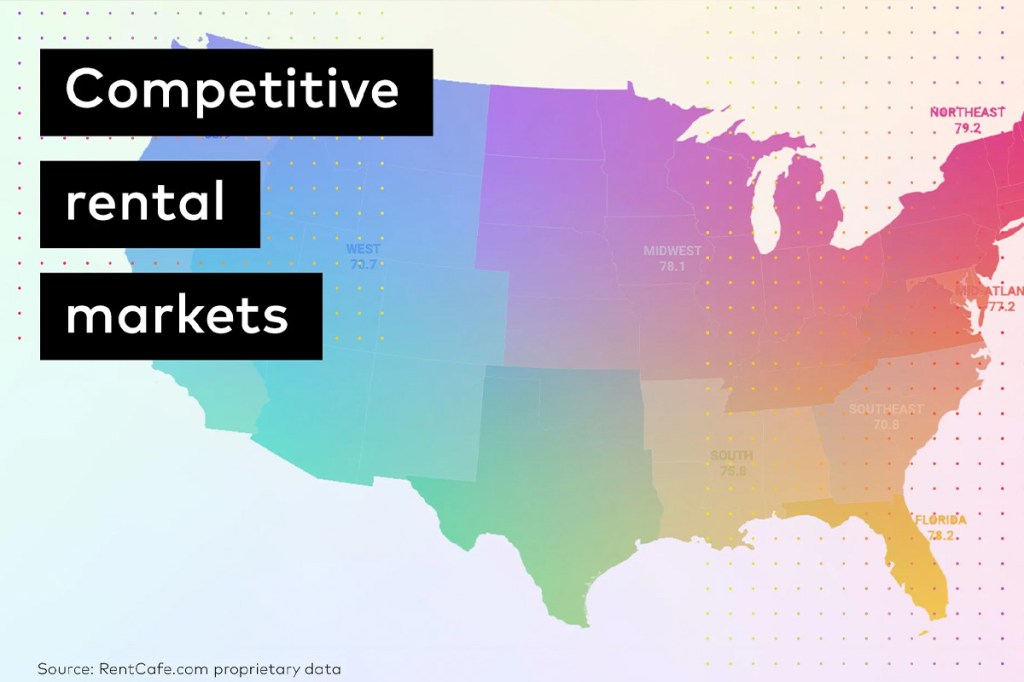
We’ve reported on the post-pandemic demand for self storage, focusing on the types of units being rented, current drivers for demand and the increase in storage use by younger tenants. Now it’s time to pan out and take a comprehensive look at self storage in 2024. With the Yardi Matrix Self Storage National Report For January 2024 as our guide, let’s look at key indicators facility managers need to know.
We’ll briefly cover:
- Economic factors fueling our 2024 predictions
- Downward trends affecting self storage today
- Strategic approaches self storage operators can take in 2024
- Other trends to watch
Key economic trends of 2023
As we settle into 2024, we see that the self storage industry continues to exhibit a unique blend of stability and evolving challenges. Despite the anticipated economic downturn, the self storage sector remained surprisingly stable in 2023, with only minor rate reductions. This resilience testifies to the industry’s robust nature in the face of economic headwinds. Nonetheless, a downturn (not necessarily a recession) is expected in 2024.
Self storage across the U.S.
Occupancy and asking rates are stabilizing after a period of rapid deceleration. Urban markets like Chicago, New York and Southern California are stable and outperforming, while Sun Belt markets are underperforming. Overall, national street rates have declined but now show signs of improvement.
Growth is expected to return to historical averages, but this depends on whether the housing market recovers. There are lingering concerns about new supply, especially with regards to reduced construction lending. The transaction market is slow as well but expected to recover in late 2024.
Two downward trends affecting self storage today
The industry enters 2024 in good health, despite higher vacancy rates compared to the previous two years. The outlook remains positive, suggesting resilience and potential growth. Still, there are a few trends hurting the self storage industry, namely a slowdown in household formation and falling street rates.
Household formation: This is a critical factor influenced by rising vacancies, increasing home prices and a slowdown in home sales. However, a spike in consumer sentiment is expected to benefit the storage sector in 2024.
Street rates and occupancy: There’s been a downward trend in street rates, yet they are still higher than pre-pandemic levels. This is a positive sign of market normalization, even as occupancy rates are challenged by increased construction and a slowdown in demand.
3 strategic approaches for 2024
Facility managers need to adapt to the evolving landscape. The good news is that these strategies work all the time, not simply in the face of economic hardship. Staying competitive means mastering your pricing, technology and data analysis.
1. Nail down pricing & marketing
Operators must reassess their local competitive landscape, enhance marketing efforts and ensure optimal pricing in a market increasingly influenced by REITs. The competition is going to get tougher, especially with most of the pipeline coming from REITs and larger investors. Smaller operators can’t focus on “chasing” the big-name storage businesses, but they can make a big impact by focusing on what they can control. As part of any marketing effort, make the customer experience matter more than ever.
2. Embrace centralization & automation
Automation is going to be very important for businesses of all sizes, but small businesses are generally slower to adopt new software. Online storage leasing and payments are the standard. This is where the independent facility managers and owners are going to need to be to compete. Control what you can control!
Facility management software is crucial for efficiency. This is especially true for small businesses. The self storage industry is slower to adapt to new technology than other markets, but online storage leasing and payment systems are quickly becoming standard. By focusing on automation, service-based facilities can remain competitive with major players.
The truth is that smaller operations can’t afford to wait on tech adoption. In a few years, facilities that don’t offer online leasing and payment options are going to feel very far behind. (Some may be feeling that way already.)
Centralization comes from all-in-one software
Software allows you to centralize key roles while automating repetitive time-consuming tasks. Yardi Breeze Premier is designed to give small businesses the same functionality and capability as larger competitors. All that power comes in an all-in-one, easy-to-use, affordable platform.
- Control security with role-based permissions
- Improve efficiency with CRM follow-up activities
- Access auction management and enhanced rent, discount and pricing tools
- Track job costs so you’re always on budget, maximizing profit potential
- Empower tenants to make reservations and payments online
- And so much more!
For larger storage operators that have complex needs and require more customization, flexibility and control, consider Yardi Storage Manager, our enterprise-level facility management software option.
3. Use market intelligence to stay ahead
Where should you be getting market data? You need the right sources to help you make informed decisions around acquisitions, attract investors and more. Moody’s Analytics offers comprehensive data, but it tends to be cost-prohibitive for smaller businesses. On the other hand, Yardi Matrix is the leading source of industry-specific data. It interfaces seamlessly with Yardi software, making it a practical choice for every real estate market.
- Get site-level data including patented ratings, ownership and management information
- Gain new supply pipeline insight at the asset, competitive set and market levels
- Compare rents by unit size and access sales history
- View information on in-place loans and expirations for construction, permanent and CMB
Conclusion: trends to watch
Looking ahead, we’re entering a landscape where strategic adaptation will be key. Operators need to focus on local market conditions, technological advancements and data-driven decision-making to successfully navigate the year. With a balanced approach, self storage operators can continue to thrive amidst the challenges.
A few final tips to leave you with:
- Keep an eye on construction trends, as they will significantly impact the industry
- Monitor street and long-term rates (especially important for small businesses)
- Monitor the Federal Reserve’s interest rate decisions (it will impact the industry the most)
- Use respected market intelligence to delve into micro- and macro-level market data



